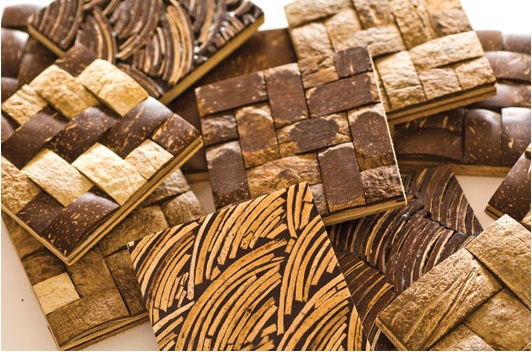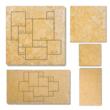Tile is a popular choice for many purposes and applications and can add to the look you are trying to achieve, even in a small space. And even better news is that manufactures are reclaiming and recycling materials into eco-friendly tiles that are versatile and look great. Some eco-friendly tile require special considerations when installing. So let’s take a look at some of them.
If you are not an experienced “do-it-yourselfer” you will want to at least consult or consider hiring a professional to help with your choice and installation. Tile can be rather expensive so you want to make sure that you make the best choices with your investment. We have excellent service and support at Plumbtile.com and you can chat online with a consultant or give us a call if you need help.
Since we’re working with eco-friendly tile you’ll probably want to consider using “low-VOC” (volatile organic compound) products for your adhesive, grout and grout sealer. If you are installing in a bathroom make sure these products are waterproof. And for the kitchen they should be heatproof. Be sure to have the best base possible to install the tile over. Concrete is the most stable but more often tile is installed over a wood sub-floor. Ensure that the sub-floor is not warped or rotted so as to provide a stable base and not crack the grout or the tiles themselves. Fix any problems with the sub-floor before proceeding with installing the tile. If you’re installing as a wall or countertop covering make sure the surface is as flat and stable as possible.
There are some special considerations with different types of eco-friendly tile. Some Cork Tile for flooring uses a click-together type process. Since this cause the joints to not be sealed this type of flooring is not recommended for wet environments like the bathroom. As the cork panels expend and contract, possibly causing individual panels to warp. Most manufacturers provide a special tapping block. Be sure to use this rather than hammering directly on the cork panels when snapping them together.
 With Coconut Tiles be sure to thoroughly clean the wall surface. Apply the adhesive to the back of the panel and press evenly across the whole tile for 5 seconds to be sure the entire backside is flat against the wall. If you are using grout, leave a space of 3mm between tiles. If you’re not using grout the space can be smaller at 1-2mm. Instead of grout these smaller gaps can be filled with sealant.
With Coconut Tiles be sure to thoroughly clean the wall surface. Apply the adhesive to the back of the panel and press evenly across the whole tile for 5 seconds to be sure the entire backside is flat against the wall. If you are using grout, leave a space of 3mm between tiles. If you’re not using grout the space can be smaller at 1-2mm. Instead of grout these smaller gaps can be filled with sealant.
Teak Mosaic tiles should be cut to size using a wet tile saw with a new ceramic tile saw blade. A standard sliding compound mitre saw with a carbide tipped blade can also be used. It is not recommended to set the teak tile and grout it in the same day. Letting the adhesive dry for a day will allow the tile to acclimate to the installation atmosphere.
 Stone Tile is mostly used for flooring and should receive special consideration. Stone tile is quite heavy and requires very accurate installation. In particular, stone tile should be installed by a professional. Preparation and of the substrate and surface is very important to ensure that the stone tile and grout will not crack or chip.
Stone Tile is mostly used for flooring and should receive special consideration. Stone tile is quite heavy and requires very accurate installation. In particular, stone tile should be installed by a professional. Preparation and of the substrate and surface is very important to ensure that the stone tile and grout will not crack or chip.
It’s a good idea with any natural material tiles such as these to open the boxes for a day or so before the installation and let the tile acclimate to the room in which the will installed. Be sure to check out all the tile materials we have available at Plumbtile,com. We can help with all of your materials needs and you can contact us with any questions or for more information.

